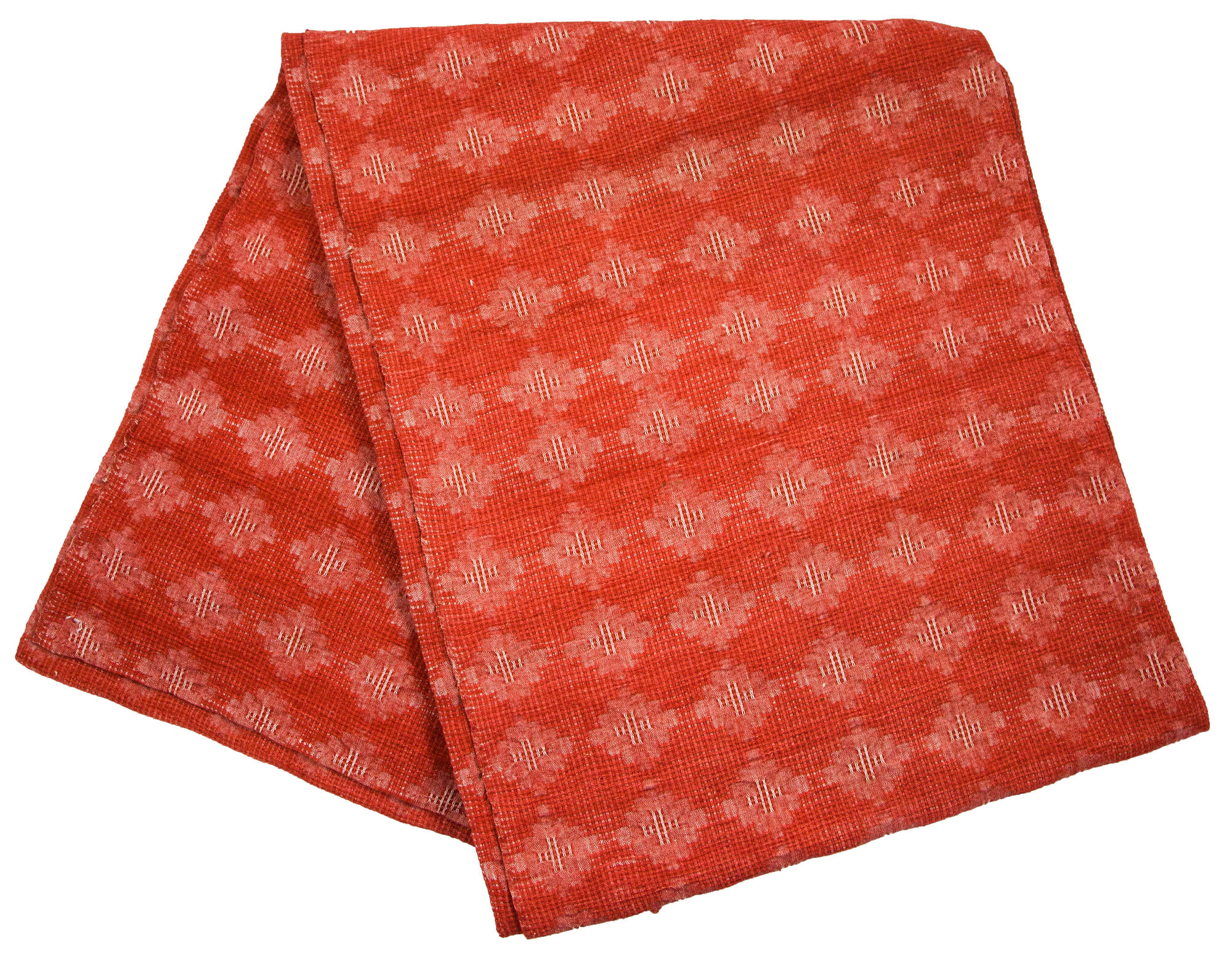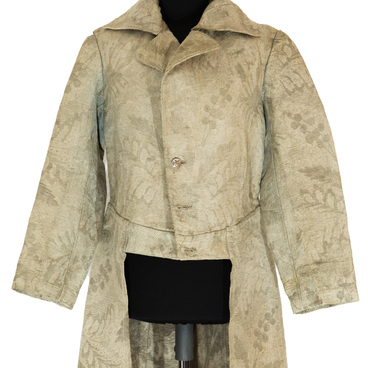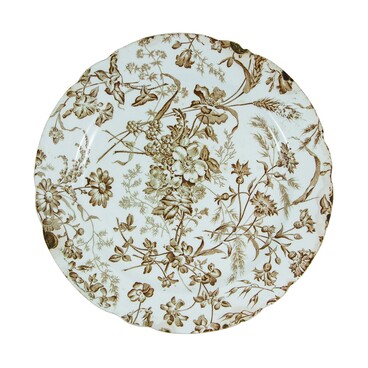Table-cloth - “stoleshnik” of “branyi” weaving
There are pieces of material made in the technique of “branyi” weaving on the benches in the inner porch.
Branoe weaving is technique of patterned weaving. According to this technique, threads make composite patterns with narrow clearances. The name “branoe weaving” originated from the way of creation a pattern and the word “to take”. The way of creation a pattern is the following: warp yarns “made their way through” with the help of the special small plank — bralnitsa.
One-side dvuhutochnoe branoe weaving on the thick flax warp was spread on the banks of the Klyaz’ma river. This territory was rather small. It was inhabited by the Russians. In the second part of the XIXth century many of them had devotion to the Old Belief which appeared on that territory in the XVIIth century.
Creation of ritual and festive towels in the mode of one-side dvuhutochnoe branoe weaving in Vladimirskaya province was not a trade. People wove for themselves and for their relatives. Hitro-mudroe (skillful — wise) weaving and embroidery were traditionally considered to be pleasing to God. That was why people should have devoted their spare time to this occupation.
Pattern which was created by means of interchange of symbols, lines, repeated basic motive elements in succession was called an ornament. The ornament was profoundly conservative, subjected little to change. It was not only an adornment, moreover, it was a charm, a spell against evil natural forces.
In olden times in order to weave a pattern for a shirt or a sarafan (a long sleeveless gown of country women) special weaver’s loom was used. The weaver’s loom was big. It was kept indoors in winter, it was carried out outdoors on warm autumn days.
The pattern is repeated like in mirror on the back, where a pick goes under a warp. Sometimes skilled workwomen did pattern on the back more complicated than pattern on the face intentionally.


